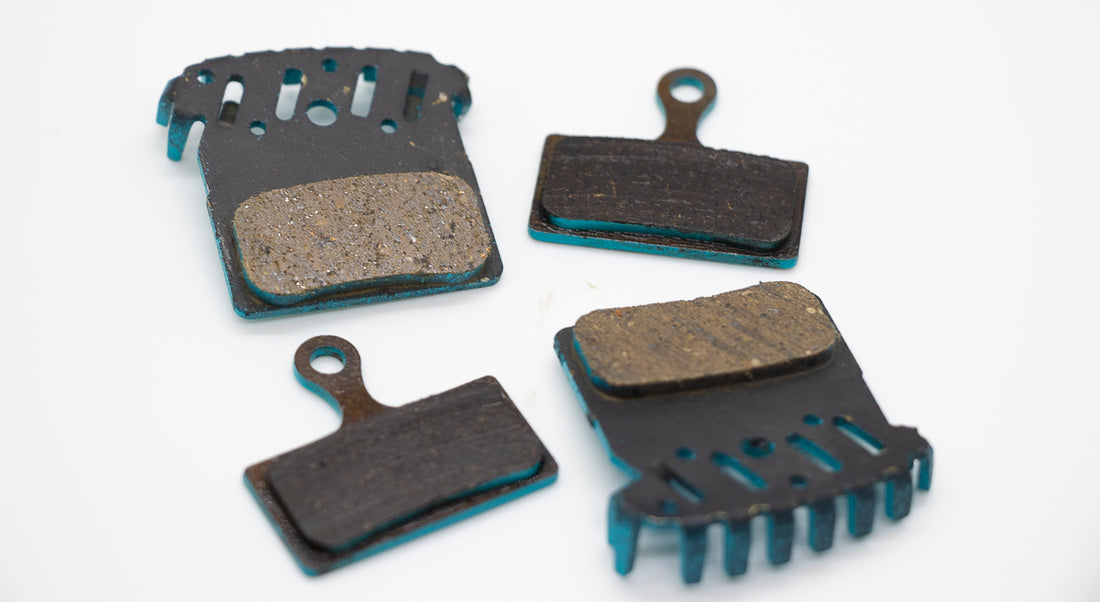You rely on your brakes time after time to control your speed and to bring you safely to a stop. Without them, you’ll need more than a helmet to keep yourself intact. So when you squeeze your levers and things start to feel a little softer than they used to, it’s time to check and see if your brake pads are worn out and need replacing.
Symptoms of worn out brake pads may include:
- Longer brake lever travel - On new pads you have a short distance between the beginning and end of your brake lever’s travel. When they’re worn, this distance increases and the lever will have a longer throw
- Less braking power - While a worn brake pad should still have similar overall power compared to when they were new, over time the surface of the brake pad may start to glaze over or become contaminated
- More noise - metal on metal contact is one of the worst sounds you could hear while riding your bike. Hopefully you never let your brake pads get that worn out!
What Makes Your Brakes Wear Out
Brake pads are wear items and are meant to be replaced periodically. There is no set schedule on when they should be replaced and how fast they wear is based on a number of factors.
Weather
In perfect conditions your brakes will last a lot longer. As things get drier, or wetter, more debris is able to get in between the brake pad surface and your rotor, causing additional wear. In the dry it’s excess dust that’s the problem and in the wet you’ll get mud packed in with all sorts of gravel and dirt to rough up your brake pads.
Terrain
If the terrain you’re riding is steeper and more challenging, you’re likely using your brakes more often. And if so, they will wear out faster.
Pad Compound
The type of compound you use plays a role in how long your brake pads will last as some compounds are more durable than others. Organic brake pads are made with softer compounds and will wear out much faster than a fully-metallic, sintered brake pad. Right in the middle is a semi-metallic pad which combines both metallic and organic compounds for a compromise between braking performance and wear.
Type of Bike and Rider
If you’re an aggressive rider you might be using your brakes more often - or harder when you need them. Alternatively, if you tend to ride your brakes on descents that will also wear them out faster than if you used them periodically. The type of bike also plays a role, as a heavier e-bike will be more taxing on the pads than a lighter XC bike.
Contamination
Contamination can occur when cleaners, grease, or brake fluid make contact with the brake pad and absorb into the material. While there are methods to clean up contaminated pads, once it happens they’ll never be as good as they were and it’s time to replace them.

An example of heavily contaminated brake pads
When Should Disc Brake Pads Be Replaced
Most disc brake pads start at about 3-4mm (ours are 4mm) including the backing plate . Once this is worn down to less than 3mm, it’s time to think about replacing the pads. This is because the backing plate is 1.75-2mm and that means your pads are less than 1mm thick.
Disc brake pads don’t have any wear indicators, so the pad will have to be removed to be measured and inspected. A caliper will be the best tool for measuring pad depth, but if you don’t have one of those you can use one of your pads to estimate how worn they are.

The backing plate is usually around 2mm thick, so if you set it next to your pad surface you can see if it is thinner than the backing plate. If it is less than half the height, the pad needs to be replaced. This won’t be the most accurate method, but gives you an idea of how close they are to being worn out.

When Should Rim Brake Pads Be Replaced
It’s easy to tell when rim brake pads need replacing as there are typically wear indicators molded directly into the brake itself. Across the surface of the pad are any number of grooves. If those grooves are still showing the pad is ok. Once they disappear, it’s time to replace the pad.


